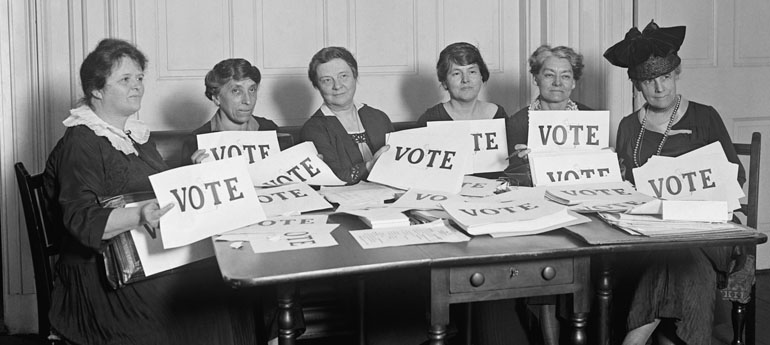London is full of important landmarks and sites where you can learn about British historical figures, with plaques adorning doors, lampposts and buildings all over the city. In celebration of women's history, we've taken a closer look at some of the most famous women from London, including their achievements and where you can visit their commemorative sites.
1. Dorothy Lawrence
Born in Hendon in northwest London, Dorothy Lawrence was a headstrong journalist during WW1. She managed to obtain a Khaki soldier uniform, forged identification papers, and posed as a man in order to be able to get to the front line from where she reported.
Lawrence was living in France as a journalist when the war broke out, and contacted various British newspapers asking for work as a war correspondent. They all refused because of her gender, so she took matters into her own hands, joining the army as ‘Denis Smith'. She was the only female soldier on the frontlines during WW1.
2. Malorie Blackman
Author of the award-winning young adult Noughts & Crosses series, Malorie Blackman famously uses dystopian science fiction prose as a way of communicating social issues. Renowned for exploring racism in an accessible way, the writer was appointed an OBE – Order of the British Empire – in 2007. Blackman was also the Children's Laureate between 2013 and 2015
3. Rosalind Franklin
Attending King's College London, Newnham College, and the University of Cambridge, Rosalind Franklin was a learned chemist. Gaining her Ph.D. at Cambridge, Franklin went on to learn crystallography and X-ray diffraction. She used her skills to find important insights into human DNA structure, after taking the famous Photograph 51 which became important evidence in DNA science.
Sadly, Franklin was not accredited for her work until after her death, as Photograph 51 was shown to James Watson and Francis Crick. The pair used it to build their famous DNA model in 1953, and went on to win the Nobel Prize in 1962 – after Franklin's death.
4. Shirley Thompson
Eminent composer, Shirley Thompson, was the first woman to compose and direct music for a major BBC drama series; South of the Border in the late 1980s. Other achievements include Thompson becoming the first woman in Europe to compose and conduct a symphony in the last 40 years, in 2004.
She's also made waves in the philanthropic scene, creating various educational programmes for children that inspired the national ‘Every Child a Musician' initiative in 2010. Her groundbreaking opera, ‘The Woman who Refused to Dance' was created as the opening piece for a UK parliament exhibition; ‘People & Parliament: The Act of the Abolition of the Trade in Enslaved African People 1807.'
5. Charlotte Cooper
Five-time Wimbledon champion Charlotte Cooper is the oldest woman to have won the Wimbledon singles tournament in history; aged 37 years and 282 days. Between 1893 and 1917 she competed in 21 Wimbledon tournaments, and in the year 1900 (the first year women were invited to take part in the Summer Olympics) Cooper competed in the Olympics and won the singles tennis event. This achievement made her the first female Olympic tennis champion and the first individual female Olympic champion.
What’s even more extraordinary is that in the year 1896, when Cooper was just 26, she went completely deaf. This means she managed to achieve the majority of her accolades without the ability to hear the ball.
6. Virginia Woolf
Author of notable works A Room of One’s Own and Mrs Dalloway, Virginia Woolf is considered to have been hugely influential in modern, 20th century literature. She’s known for her ‘stream of consciousness’ writing technique, which she used to deliver accessible and relatable prose.
Woolf had a troubled life, being afflicted with much hardship and mental ill health. She was institutionalised more than once and made several attempts to commit suicide before succeeding in 1941 when she drowned. Having been vastly successful as a female author, and for her commentary on gender inequality, Woolf is highly commended for inspiring feminism.
7. Ada Lovelace
Ada Lovelace is often accredited for seeing the full potential of a computing machine, and as one of the first computer programmers. The daughter of Lord Byron, Lovelace was privately schooled in mathematics and showed a keenness for the subject. Her social circles included the likes of author Charles Dickens and scientists Andrew Crosse and Sir David Brewster. It’s with these contacts that Lovelace was able to push her education and become an acclaimed mathematician.
In the years 1842-43, Lovelace translated a French article about ‘the calculating engine’, and added her own notes. These notes are widely perceived to include the first algorithm designed to be carried out by a machine.
Thanks to the English Heritage’s Blue Plaque initiative, which was started in 1866, there are now more than 900 plaques across London indicating important locations relating notable people. In addition to exploring the historical contributions made by the aforementioned women, keep an eye out for blue plaques on your trip to London to find out more about our country’s most influential women.
Staying over in London? Take a look at the latest Gem Hotels deals for 4-star boutique hospitality.












